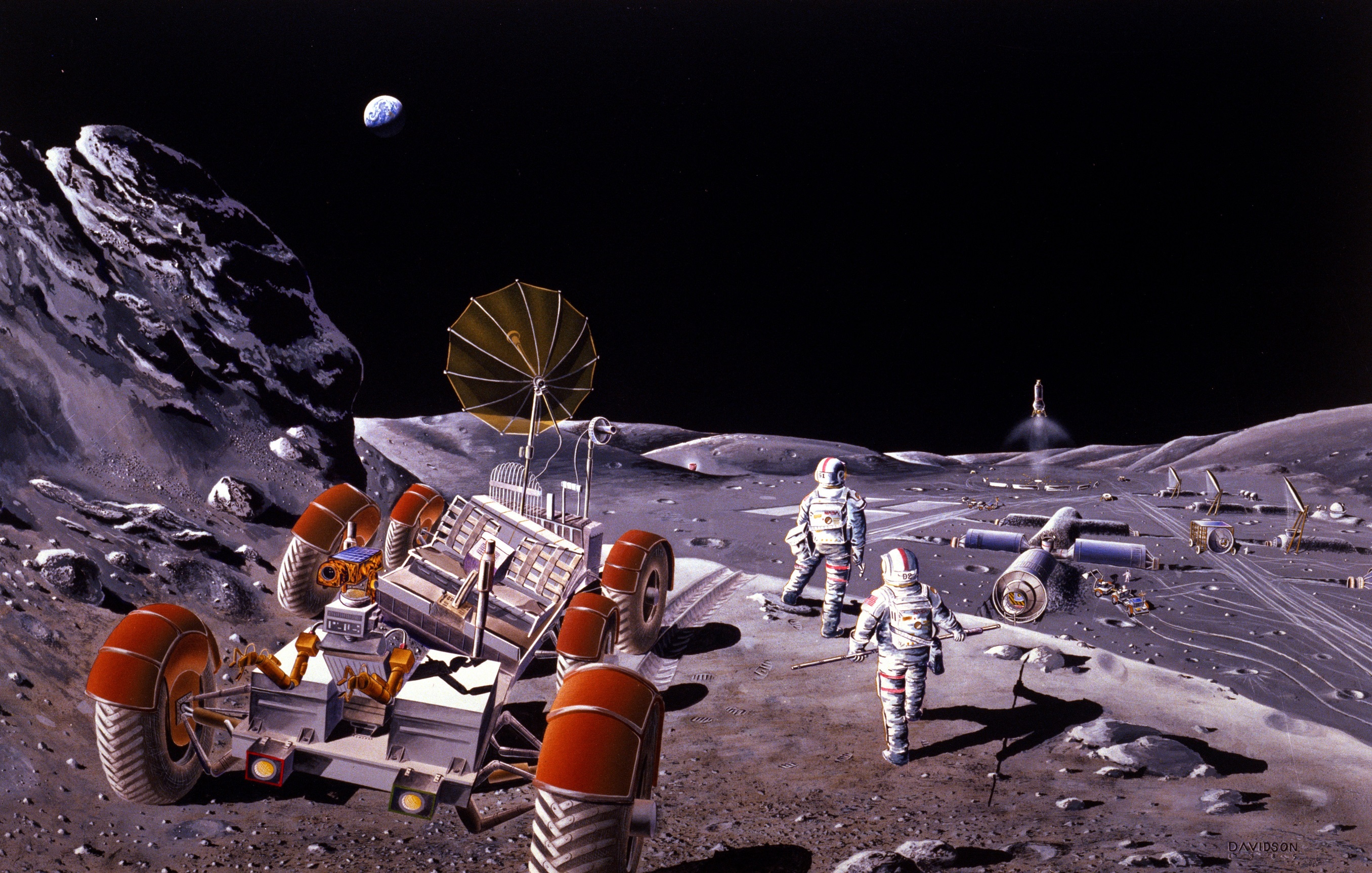Moon_colony_with_rover. 2jpg.jpg

Part 3 of 4 Parts (Please read Parts 1, 2 and 3 first)
In 2019, China’s Chang’e-4 spacecraft landed on the far side of the Moon. It ran an experiment involving a six-pound biosphere. Inside were a series of seeds, eggs, and dormant single-celled organisms. During the lunar day which lasts for fourteen Earth days, a cotton plant grew from a seed. This marked the first time an Earth seed had spouted on the Moon. Two leaves sprouted and the plant died when the lunar night fell, and temperatures plunged.
A possible resource that is extremely rare on Earth but very common on the surface of the Moon is helium-3. This isotope of helium is constantly bombarding the surface of the Moon as part of the solar wind. The Chinese recently discovered the helium-3 in lunar regolith will be much easier to extract that previously thought. Helium-3 is being considered by researchers as a possible fuel for nuclear fusion reactors. A company in Redmond, Washington named Helion Energy is working on a radical fusion reactor design that would utilize a combination of deuterium and helium-3. Helium-3 could be extracted from lunar regolith and shipped to Earth. This would be expensive, but the Helion reactor can recycle helium-3 so it would be part of construction and not a fuel that was constantly burned.
The success of these experiments, combined with the composition, location and other properties of the Moon make a strong case for the Moon to be the first world beyond the Earth where we should attempt to build an extraterrestrial civilization. If we ever hope to become a multi-planet species, there will be many lessons to learn, many obstacles to encounter and overcome, and many small steps to take before we are really ready for the big prize which will be to become an interstellar civilization. Even thought the space age only began in 1957, the largest obstacle to terraforming is the investment of resources. On the Moon, with no deleterious environmental factors, we will have the luxury of going “one dome at a time.”
If our goal is to terraform the Moon, we now have a blueprint for how to do it. Bring an airtight dome, fill it with breathable air, recover the water we need from a nearby lunar crater and bring the biota necessary to sustain life with us.
By following these steps, we could create our first long-term home for humanity beyond the confines of planet Earth. It could be built on the Moon’s near side, in constant communication with the Earth.
As long as we have sufficient battery power to sustain, heat, and possibly illuminate the environment during the long lunar nights, the first human extraterrestrial civilization is well within the realm of possibility. Rather than attempt to terraform an entire planet, going to the Moon would give us the luxury of terraforming only the areas of interest. For each world that’s out there, we only get one chance to do things correctly. When it comes to the question of terraforming, it would be foolish to not to take the easiest steps first.